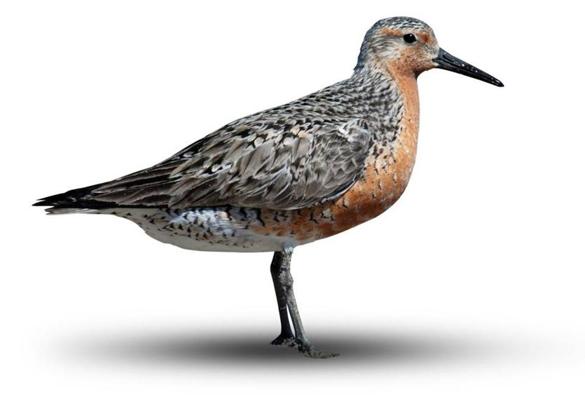The rufa red knot (Calidris canutus) is truly a master of long-distance aviation. On wingspans of 20 inches, some knots fly more than 9,300 miles from south to north every spring and repeat the trip in reverse every autumn, making this bird one of the longest-distance migrants in the animal kingdom. Surveys of wintering knots along the coasts of southern Chile and Argentina and during spring migration in Delaware Bay on the U.S. coast indicate that a serious population decline occurred in the 2000s. The knot’s unique and impressive life history depends on suitable habitat, food and weather conditions at far-flung sites across the Western Hemisphere, from the extreme south of Tierra del Fuego to the far north of the central Canadian Arctic. Knots need to encounter these favorable habitat, food and weather conditions within narrow seasonal windows as the birds hopscotch along migration stopovers between wintering and breeding areas. For example, the knot population decline that occurred in the 2000s was caused primarily by reduced food availability from increased harvests of horseshoe crabs, exacerbated by small changes in the timing that knots arrived at the Delaware Bay. Horseshoe crab harvests are now managed with explicit goals to stabilize and recover knot populations.
Source: USFWS
http://www.fws.gov/northeast/redknot/

- Login om te reageren
